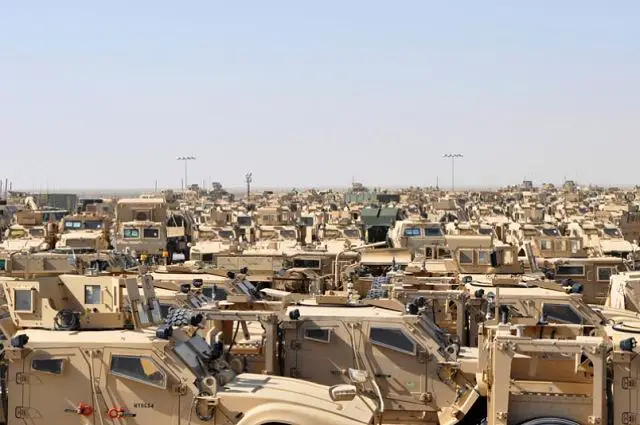Breaking news
Half of U.S. military vehicles in Afghanistan will be destroyed or sold to foreign countries 0506142.
| a | |||
Defence & Security News - United States |
|||
| Thursday, June 5, 2014 11:32 AM | |||
| Half of U.S. military vehicles in Afghanistan will be destroyed or sold to foreign countries. | |||
About
half of the U.S. military vehicles still in Afghanistan – worth
billions of dollars – aren’t coming home, and instead will
be destroyed or otherwise disposed of by 2016, officials say. An even
higher percentage of the rest of the remaining equipment also will be
scrapped or left behind. |
|||
 U.S. military armored vehicle at Kandahar Airfield, Afghanistan, in preparation for shipping it back to the United States. |
|||
U.S.
troops received their marching orders last week for their final years
in Afghanistan: President Barack Obama said 9,800 will remain in the country
after the end of 2014. Half of those troops will come out by the end of
next year, followed by the remainder by the end of 2016. The only military
personnel enduring past then will be the “normal military presence”
at the U.S. Embassy in Kabul, working on foreign military sales and assistance.
There is roughly $36 billion of U.S. military equipment currently in Afghanistan, which in its used state is now worth about $8 billion. Of that, only $3 billion to $4 billion worth will be shipped out of the country, largely by air, and on to foreign ports for the return journey home. The rest will be destroyed, given away or perhaps sold. “A lot of
the cargo will come out and be reset to be used by the Department of
Defense,” says Army Col. Glenn Baca, operations chief for the
Military's Surface Deployment Distribution Command. Some of the equipment
will return to military depot yards to be refurbished and redistributed
to Army or Marine Corps units. “Then there is some equipment that
is in excess to the U.S. Department of Defense’s needs.” There were about 20,000 vehicles in Afghanistan when the drawdown efforts began. Roughly half are still there: 5,000 to 7,000 will be brought back to the U.S. this year, and roughly 5,000 will be disposed of or left in Afghanistan by 2016. |
|||



















